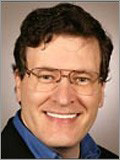Over the years, Microsoft Research has attracted experienced researchers at the top of their fields, as well as fresh new talent that achieves significant results right out of the gate. And the research community has rewarded many of them with some of its highest honors.
Microsoft Research isn’t the kind of place where people walk around with medals around their necks—collaboration and collegiality win out over egos and boasting—but the number of awards bestowed upon its researchers is quite impressive. Many Microsoft researchers have received the loftiest awards attainable in their particular field.
The most prestigious honor one can receive as a computer scientist is the A.M. Turing Award (opens in new tab). Named for the British mathematician widely regarded as one of the fathers of computer science, the award honors a career of significant and lasting contributions to the field. Previous winners have included artificial-intelligence pioneer Marvin Minsky and Douglas Engelbart, whose work on interactive systems laid the foundation for modern desktop computing.
on-demand event
Three Turing Award winners currently work at Microsoft Research: Tony Hoare (opens in new tab), Jim Gray (opens in new tab), and Butler Lampson (opens in new tab). Hoare, who received the award in 1980 for his contributions to the definition and design of programming languages, continues this pioneering work today as a principal researcher at Microsoft Research Cambridge.
Gray, a San Francisco-based Microsoft technical fellow well-known for his pioneering work on TerraServer (opens in new tab) and SkyServer (opens in new tab), as well as for his help in improving the company’s database technologies, received the award in 1998 for his contributions to the field of databases and transaction processing, including the development of industry-standard benchmarks for measuring database performance. He credits his colleagues with much of the work that earned the award.
“The awards are an embarrassment,” he says, “because everything I have accomplished has been in collaboration with others—and the awards typically didn’t recognize my collaborators.”
Lampson, one of the founding members of Xerox’s PARC research lab, received the award in 1992 for his collaborative work on many pioneering personal-computing technologies, including the Alto workstation—a precursor to modern desktop computers—as well as Ethernet networking technologies and many other innovations in operating systems, programming systems, displays, security, and document publishing.
Lampson also was elected to the National Academy of Sciences (opens in new tab) in 2005 and joined Chuck Thacker, like Lampson a Microsoft technical fellow, and others in receiving the Draper Prize (opens in new tab) from the National Academy of Engineering (opens in new tab) (NAE) for their work on the Alto. He echoes Gray’s modesty.
“I don’t think the awards make that much difference inside Microsoft,” Lampson says, “where people tend to relate to you because of what you’ve done, rather than what awards you’ve received. It makes much more of a difference outside, where people and organizations are more impressed by rewards.”

John Platt
Not many people associate astronomers-turned-computer scientists with the awards bestowed by the Academy of Motion Picure Arts and Sciences. Yet John Platt, principal researcher in the Knowledge Tools group at Microsoft Research Redmond (opens in new tab), won a 2005 Technical Achievement Award from the academy for his collaborative work with Demetri Terzopoulos of UCLA on techniques to create more realistic cloth textures in computer-generated animation. But modesty is contagious at Microsoft Research: Platt’s home page doesn’t mention that honor.

Jim Kajiya
Jim Kajiya (opens in new tab), a Microsoft distinguished engineer who serves as a general manager for Microsoft Research, also received a Technical Achievement Award from the academy, in 1997, along with his collaborator Timothy Kay, for their work to render realistic hair and fur. Additionally, Curtis Wong, a principal researcher who leads the Next Media group, joined his collaborators to accept a 2002 British Academy of Film and Television Arts award for Best Achievement in Online Learning, for their work on a broadband interactive television site for PBS station WGBH in Boston.
Microsoft Research is also home to three Royal Society (opens in new tab) Fellows (Microsoft Research Cambridge’s Andrew Blake, Luca Cardelli (opens in new tab), and Hoare) and three fellows of the Royal Academy of Engineering (opens in new tab) (Christopher Bishop (opens in new tab), Blake, and Hoare).
Additionally, 12 Microsoft researchers have been elected to the National Academy of Engineering, including Gary Starkweather, Phil Bernstein (opens in new tab), Microsoft Research Senior Vice President Rick Rashid (opens in new tab), Turner Whitted, Kajiya, Jim Blinn, Leslie Lamport (opens in new tab), Gray, Lampson, Thacker, Gordon Bell, and Kurt Akeley, and Hoare is an NAE foreign associate. Additionally, nine Microsoft researchers have been named as fellows by the Institute of Electrical and Electronic Engineers (opens in new tab), and eight Association for Computing Machinery (opens in new tab) fellows work at Microsoft Research today.
Of his awards, Hoare says he “[values] the recognition that the awards confer, but I’m even more gratified that many of my past and current ideas are being used to develop Microsoft software.”
Gray credits the open, collaborative environment at Microsoft Research for enabling researchers to do award-winning work.
“Microsoft is a great place to do research,” he says. “It’s full of interesting ideas, challenging problems, and brilliant people who are stimulating and open.”
Lampson echoes that sentiment:
“Microsoft Research gives me a lot of freedom to work on things that I think are important. Fundamentally, it’s the researchers’ jobs to decide what is both important and feasible, and management helps by helping them do this effectively and pointing out things about the business or the computing environment that they might not have known about.”
Rashid is happy to extend that support.
“I’m proud of the fact that Microsoft Research is the kind of place that can attract such experienced and honored researchers,” he says. “But, at the same time, I’m just as proud that we can also help younger researchers lay the foundation for equally rewarding careers.”
© 2006 Microsoft Corporation. All rights reserved. Microsoft is a registered trademark of Microsoft Corporation in the United States and/or other countries. Academy Awards® is a registered trademark of the Academy of Motion Picture Arts and Sciences.





